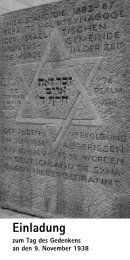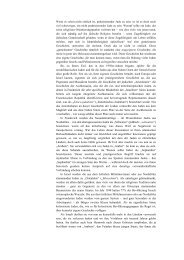IN 2000 - A B'nai B'rith Budapest Páholy
IN 2000 - A B'nai B'rith Budapest Páholy
IN 2000 - A B'nai B'rith Budapest Páholy
- No tags were found...
You also want an ePaper? Increase the reach of your titles
YUMPU automatically turns print PDFs into web optimized ePapers that Google loves.
176 ANTI-SEMITIC DISCOURSE <strong>IN</strong> HUNGARY <strong>IN</strong> <strong>2000</strong>Serb, Croatian, Armenian, Bulgarian, and German ethnic minorities live in thatdistrict. 9The 7th District section of the Keresztény Értelmiségiek Szövetsége(Alliance of Christian Intellectuals – KÉSZ) issued a petition in protestagainst the drafts. In their opinion, the designs had been made without “carefulconsideration and may divide the local population.” Those signing thedocument, namely, Catholic Bishop Antal Spányi, Greek Catholic ArchdeaconGyörgy Virányi, Evangelical Deacon Zoltán Szirmai, Calvinist pastor TamásVégh, and Baptist pastor Gyula Lukács, expressed the hope that “no religioussymbol belonging to any one denomination will appear exclusively in thecrest.” 10The November 15, <strong>2000</strong> issue of Magyar Nemzet reported that GyörgyHunvald, the MSZP (Socialist) Deputy Mayor of the 7th District, as distinctfrom Mayor Szabó, would put to tender the execution of the district’s herald. Atthe same time, he proposed to the presidents of the parties in the district councilto “decide the issue by consensus.”Two days later, the Magyar Nemzet carried an interview by István Stefka withMayor Zoltán Szabó. Stefka mentioned in his question that the menorah in theplans for the district’s herald hurt “the pride of the local population” because itmust be also taken into account that “a large number of religious Christians, aswell as Roma people live in the district.” In his response, Mayor Szabóexplained that a crest “is composed of historical motifs and is not meant to representthe religious, ethnic, or national composition of a given community.”Stefka’s next comment was directed at the “five-pointed star” above the menorahalso appearing in the drafts. Szabó replied that the symbol viewed as a fivepointedstar is none other than a motif for the rose.In an article in the Hetek weekly in connection with the debate over the herald,Katalin Földvári calls readers’ attention to markedly anti-Semitic characteristics.“Paradoxically, the conjecture that the appearance of a symbol representinga minority may give rise to negative sentiments is[itself] anti-Semitic,unless it carries the hidden message that it is an act of provocation.” Földvári9 “Megbélyegzett címer ügy” (The Stigmatized Issue of a Crest). In Vasárnapi újság, November 12,<strong>2000</strong>.10 “Menórás címerterv: egyházi tiltakozás” (Drafts for a Crest: Churches Protest). In Népszabadság,November 15, <strong>2000</strong>.





